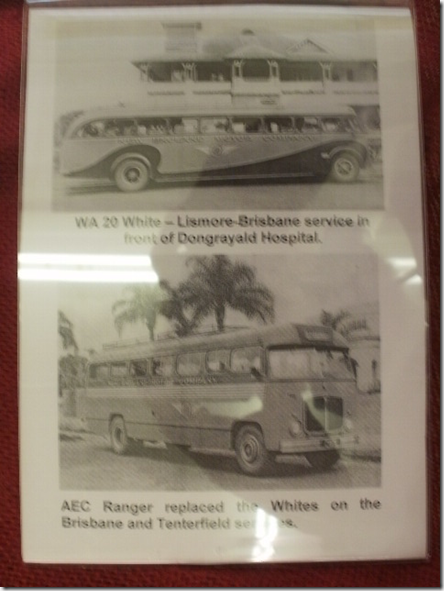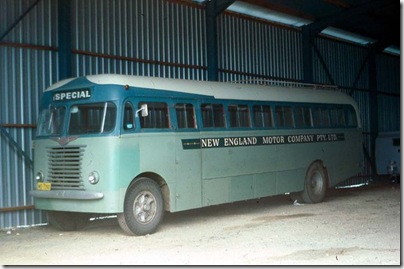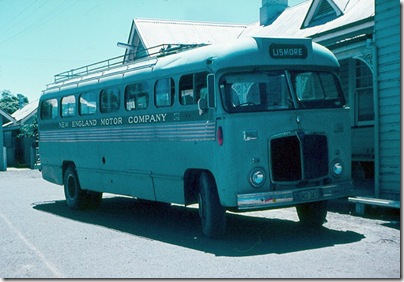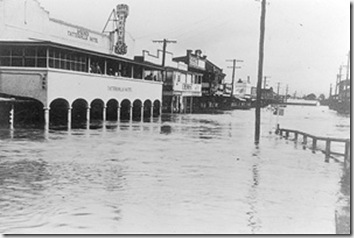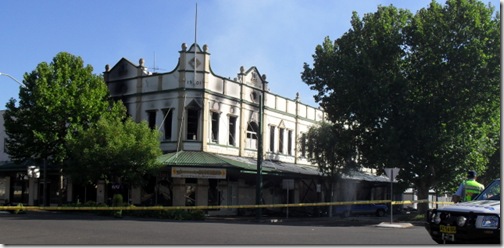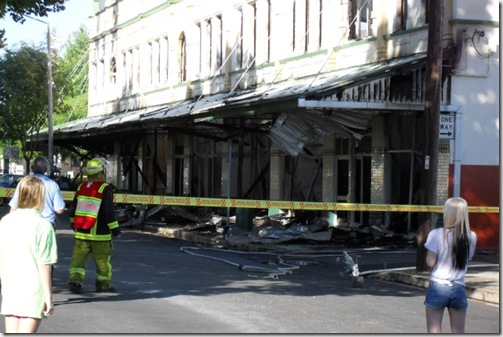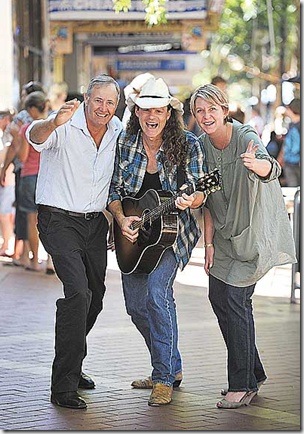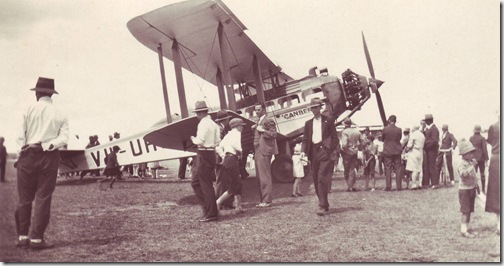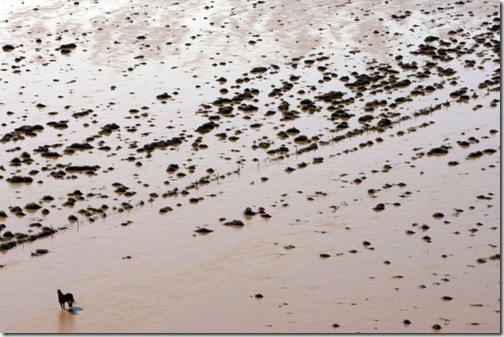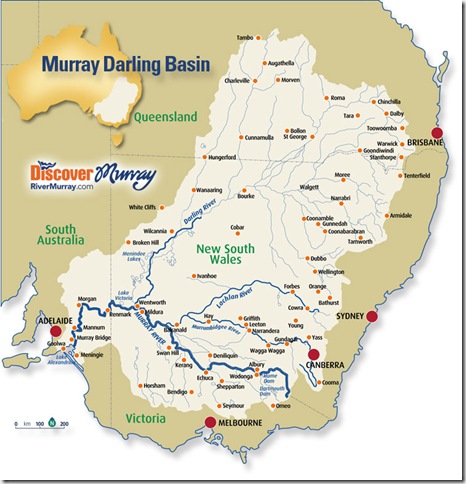By one of those accidents I so love about blogging, some did a blog search on Armidale. This led me to Paul Barratt's Jim Belshaw on Leslie Hubert Holden, a rather nice response to a post I had written. It also lead me to Archives Outside, a very good blog on archives across NSW.
Now I am often very critical of the what I see as the nonsense coming from the Sydney Government. But here I have to give credit where it is due. Our friends at the NSW State Archives have created a very good blog indeed for all those interested in regional history.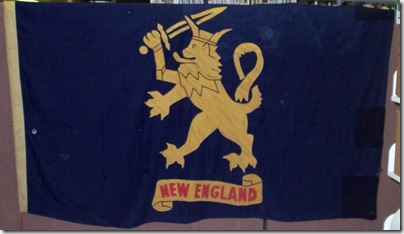
The photo of the New England flag comes from “This is all very silly” : An interesting start to a regional archives, a post by William Oats on the creation of what was, I think, the first regional archives in NSW. Dear the story took me back.
I quote:
In 1947, the Warden of the New England University College (NEUC), Dr Madgwick wrote to the Under Secretary of Justice of NSW stating ‘This was all very silly.’ He was referring to a decision that records located in the Armidale Court House could only be researched by NEUC staff and students at the State Library in Sydney( over 500 kilometres away). Local access to historic records was forbidden.
The desire to preserve local and regional records was not new, reflecting a long-standing sense of Northern NSW or New England consciousness. To understand this, we need to look at some history and especially the the campaign to achieve self-government for the North and the way this interacted with other things.
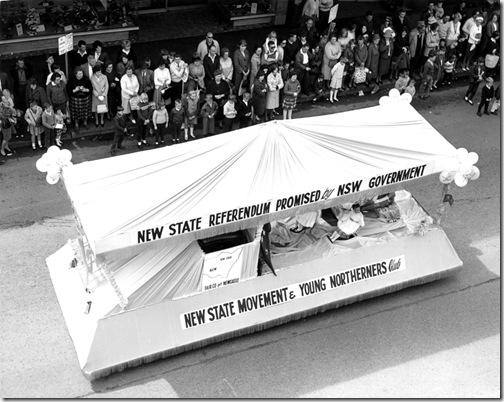 To set something of a context for this, the next photo from the same post shows a New State Float at Newcastle in 1963.
To set something of a context for this, the next photo from the same post shows a New State Float at Newcastle in 1963.
This was towards the height of the third wave of agitation to achieve self-government: the first took place in the 1920s, the second the 1930s, with the third starting following the end of the Second World War. During the second wave, the name New England was adopted as the preferred name for the new state. These waves set a context for the story that follows.
The story really begins in 1927.
The announcement in December that year that a Teacher’s College was to be established in Armidale, the first decentralized education institution, was not welcomed by all. According to CB Newling, the newly appointed principle, the Armidale proposal met active hostility within the Sydney press, among city interests and within the NSW Department of Public Instruction.[i] Perhaps most importantly, potential students fearful of the likely standards of the new college, were reluctant to leave Sydney for the bush.
The College had some powerful supporters who were fully aware of these reservations.
To David Drummond as Minister and also local member, the College was a chance to establish a country college for country kids. The College was also intended as one key building block in the creation of the infrastructure required to support a Northern State.
To S H Smith as head of the Department, the College was a chance to put his own ideas into practice.
Smith was then in his early sixties[ii].Handsome and intelligent, with a commanding presence and a beautiful speaking voice, he was also shy, fussy, sensitive and vulnerable to personal attack. A man of limited formal education, Smith had entered the teaching service in 1879 as a pupil teacher, and had worked his way up though the ranks, becoming Under-Secretary in 1922 upon the retirement of the famous Peter Board. There were those who affected to despise Smith because of his lack of formal education; Smith knew this and, sensitive on this point himself, was deeply wounded by it. Drummond’s awareness of his limited own education, he had left school at twelve, probably helped him to manage his new Permanent Head. Certainly he understood Smith, and the two men became close.
Smith had clashed with Professor Alexander Mackie, the head of Sydney Teachers, College and the stormy petrel of NSW education. Mackie, a brilliant Scottish-born academic, had come to Sydney in 1906 to head the newly established Sydney College. He was a man of strong views who believed that that the main emphasis in teacher training should be academic, that the independence of Sydney Teachers’ College must be preserved, and who had little time for financial or other constraints on his activities[iii].
Smith took a different view. Bound up in the day-to-day problems of State education, he regarded the College’s job as training those teachers the Department required in the way the Department required. Smith also disagreed with Mackie as to the most desirable form of teacher training: while not opposed to academic training, Smith thought that Mackie’s academic bias meant ill-trained teachers, and instead supported a more vocationally-oriented training.
These differences in approach would have made for difficulties anyway, but their personalities compounded problems. After Smith made a surprise inspection of Sydney Teachers’ College in 1927, Mackie wrote to him that such inspections could ‘only be done competently by a person with the necessary qualifications.’ He went on: ‘The inspection of highly qualified specialists on the College staff should be entrusted to men and women with similarly high academic qualifications and with extensive experience of College work.’[iv] Nor surprisingly, Smith found this letter ‘offensive’[v]. For Smith’s part, he later commented sarcastically to Drummond that Mackie had ‘that type of mind which is usually associated with the Scottish metaphysician.’[vi]
The combination of committed Minister and Under-Secretary would have been irresistible in any case. However, they were joined by two other men.
A W Hicks, the very able local inspector who became a key Drummond aide and who would later occupy senior positions in the Education Department, took care of local logistics, while C B Newling as the College’s first Principal provided very strong leadership. Newling’s authoritarian style, his nickname was Pop, would not be acceptable today but was critical at the time.
 In combination, these men were determined that the venture would succeed. Drummond in particular pushed construction forward as fast as possible with almost obsessive attention to the most minor details, from the type of tap to be used in the washroom to the way in which pines should be planted in the playing fields.
In combination, these men were determined that the venture would succeed. Drummond in particular pushed construction forward as fast as possible with almost obsessive attention to the most minor details, from the type of tap to be used in the washroom to the way in which pines should be planted in the playing fields.
The result was a magnificent building (photo).
It is in the focus on details of the College and in the associated attempts to gain political support that we can see the Northern influence.
The Northern press had welcomed the College’s establishment, looking forward to the establishment of a Northern university.[vii] For his part, Drummond matched the press comment with a carefully marshaled public relations exercise. The Mayor of Armidale, Morgan Stephens (another new state supporter), was asked to organize a dinner to mark the opening of the College: the dinner should be attended not only by people from Armidale, but from the North in general to mark the fact that this was a Northern occasion[viii].
Drummond’s move was both political and ideological. The ideology lay in his deep belief in the North and of the role of the people of the North in deciding their own future.
The same belief is shown in his request to the Department to obtain pictures for the proposed College gallery from the NSW Gallery, pictures that would illustrate among other things the history of the North.[ix] On that same day, he asked that a similar request be made to the National Museum for specimens for the College Museum. These should include ‘specimens definitely granted to the College to hold in trust for the people of the Northern Districts for all time’ and also ‘specimens which are intimately connected with the natural development and pursuits of the district’[x].
In 1938 after a final, sometimes desperate battle, the establishment of the Armidale Teachers' College was followed by the establishment of the New England University College. From the beginning, the new institution saw its role in part in terms of the promotion of New England and the recording and preservation of the area's heritage. Dr Madgwick's 1947 request for local access to historical records fits exactly within the New England tradition.
I won't spoil your enjoyment of Simon's post by providing the later history including the photos of University Archivist Alan Wilkes crossing streams on horse-back, a remarkable sight for anyone who knew Alan! I would add, however, that the University's role in the preservation of regional knowledge and history has been absolutely critical to the very survival of that knowledge and history. This is yet another story that deserves to be told.
[i] C B Newling, The Long Day Wanes, L F Keller, Hunters Hill, 1973, p66ff.
[ii] The description of Smith is largely drawn from a letter Drummond wrote to Elizabeth Campbell on 1 March 1965. Copy in Drummond Papers, University of New England Archives, A248/1087/6.
[iii] Material on the relations between Smith and Mackie is drawn from E S Elphick, Armidale Teachers’ College: Its Background, Foundation and Early Years, Litt.B thesis, University of New England, 1972, pp70-94. Smith’s views of the clash between himself and Mackie are set out in his minutes to Drummond of 17 November 1927 and 18 September 1928. These minutes (contained in Drummond’s Ministerial Letter Book, Drummond papers, University of New England Archives, A248/Vol.2133, p6 and pp 44-47) give a clear picture of Smith’s attitudes and personality.
[iv] Mackie to Smith, 4 November 1927. Cited Elphick, op cit, p82.
[v] Smith to Drummond, 17 November 1927. Ministerial Letter Book, op cit.
[vi] Smith to Drummond, 18 September 1928. Ministerial Letter Book, op cit
[vii] See, for example, Northern Daily Leader, 29 December 1927.
[viii] Drummond to Morgan Stephens, 27 January1930.
[ix] Drummond to Department, 21 February 1930. Ministerial Letter book, p105.
[x] Drummond to Department, 21 February 1930. ibid, p106-107.
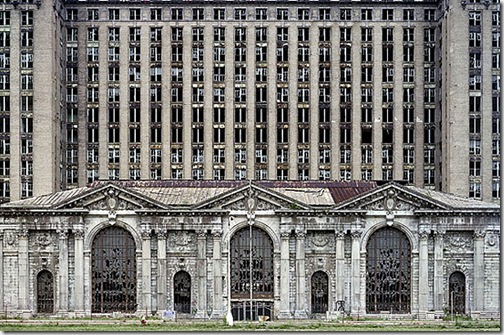 n is from Detroit's Beautiful, Horrible Decline, a photo essay by Yves Marchand and Romain Meffre. Skepticlawyer wrote a nice companion post, Ozymandias or, when a city dies.
n is from Detroit's Beautiful, Horrible Decline, a photo essay by Yves Marchand and Romain Meffre. Skepticlawyer wrote a nice companion post, Ozymandias or, when a city dies.